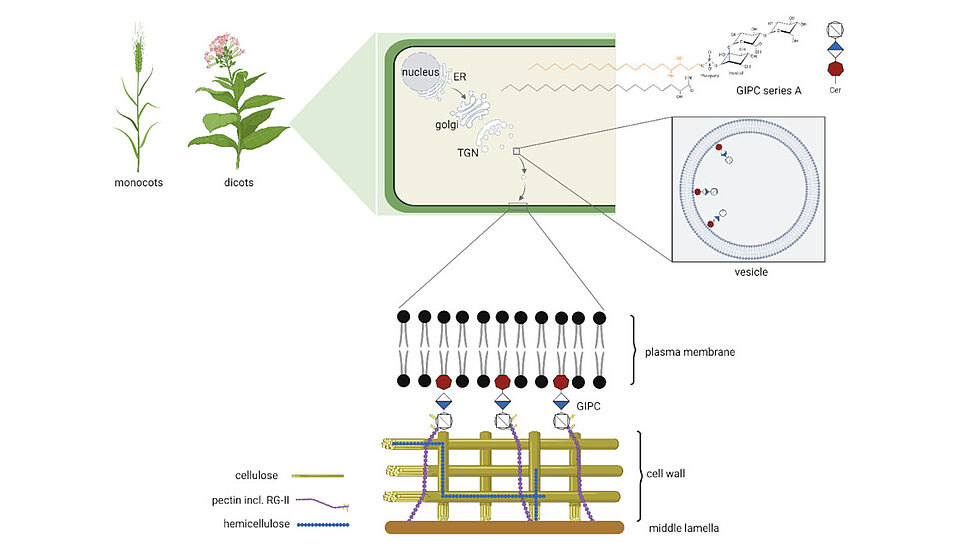An interdisciplinary research team led by Evelyn Rampler (University of Vienna, Institute of Analytical Chemistry) and Verena Ibl (University of Applied Sciences Dresden, University of Vienna) has developed a novel method for the automated, highly accurate analysis of glycosyl inositol phosphoceramides (GIPCs), which are the most common glycosphingolipids in plant membranes.
GIPCs play a central role in the stability of plant cell membranes, adaptation to environmental stress, and the immune response of plants. Despite their biological importance, they have remained largely unstudied due to their structural complexity. The newly developed method, based on high-resolution mass spectrometry, enables the automated annotation of multiglycosylated GIPC structures for the first time.
Applied to barley grains, the method revealed that GIPCs change dynamically during grain development and react significantly to heat stress. Specific GIPC groups undergo marked structural remodeling under elevated temperatures. These findings provide valuable insights into how plants adapt to rising temperatures and could contribute to breeding climate-resilient crops.
The experiments were conducted as part of an interdisciplinary project at the intersection of analytical chemistry and plant biology, coordinated by Marlene Pühringer, a PhD student in Evelyn Rampler's research group and the publication's first author. The team received additional support from the University of Graz for the automated data analysis.
- Original Publication:
Pühringer, M., Thür, N., Schnurer, M., Lamp, L.M., Panzenboeck, L., Hartler, J., Tanzer, A., Ibl, V. and Rampler, E. (2025), Automated mass spectrometry-based profiling of multi-glycosylated glycosyl inositol phospho ceramides (GIPC) reveals specific series GIPC rearrangements during barley grain development and heat stress response. Plant J, 122: e70279. - Group Evelyn Rampler
- CELBICS - Cell Biology in Crop Seeds

